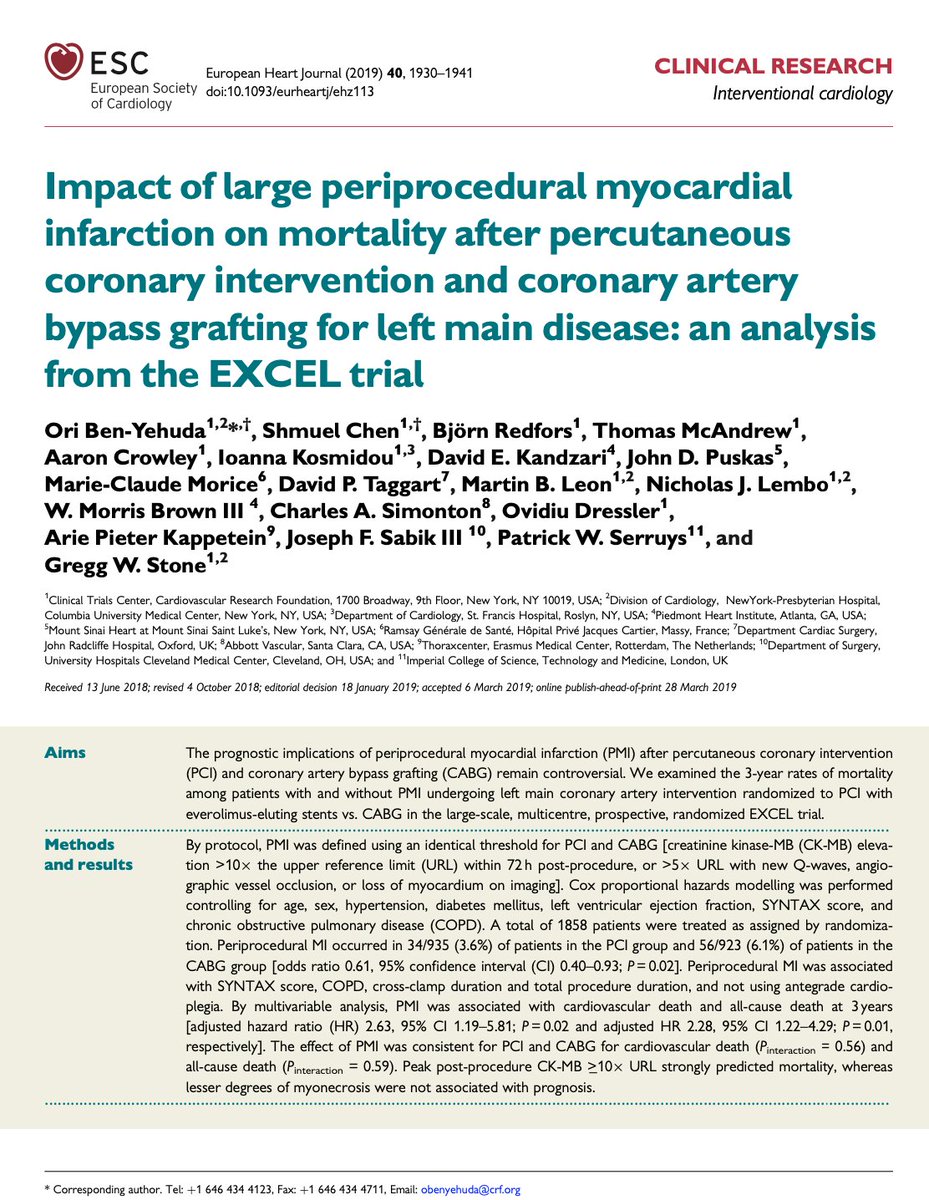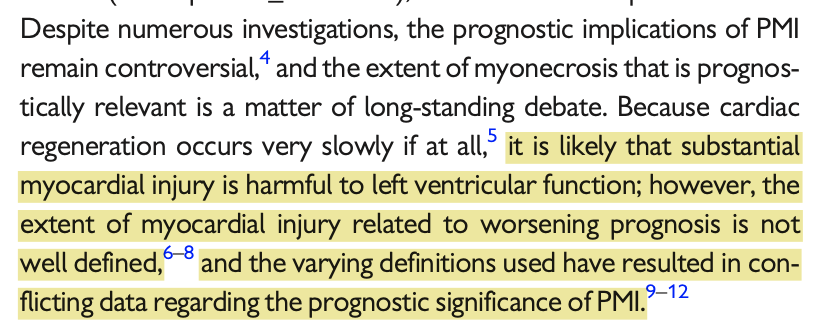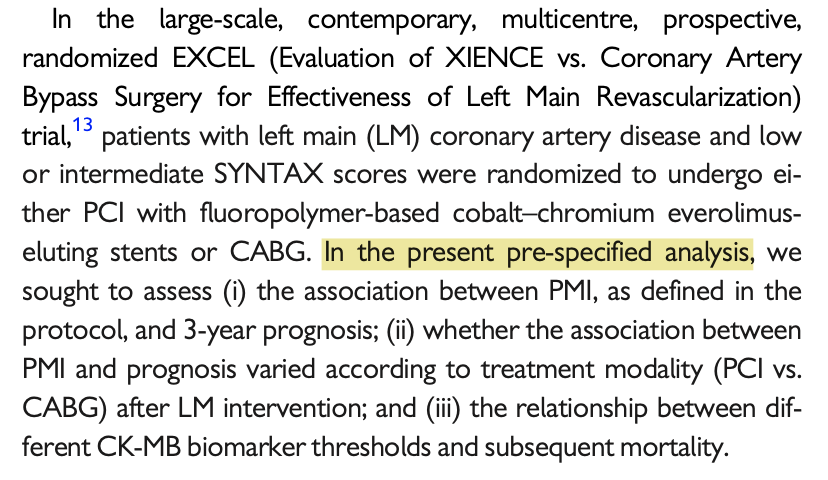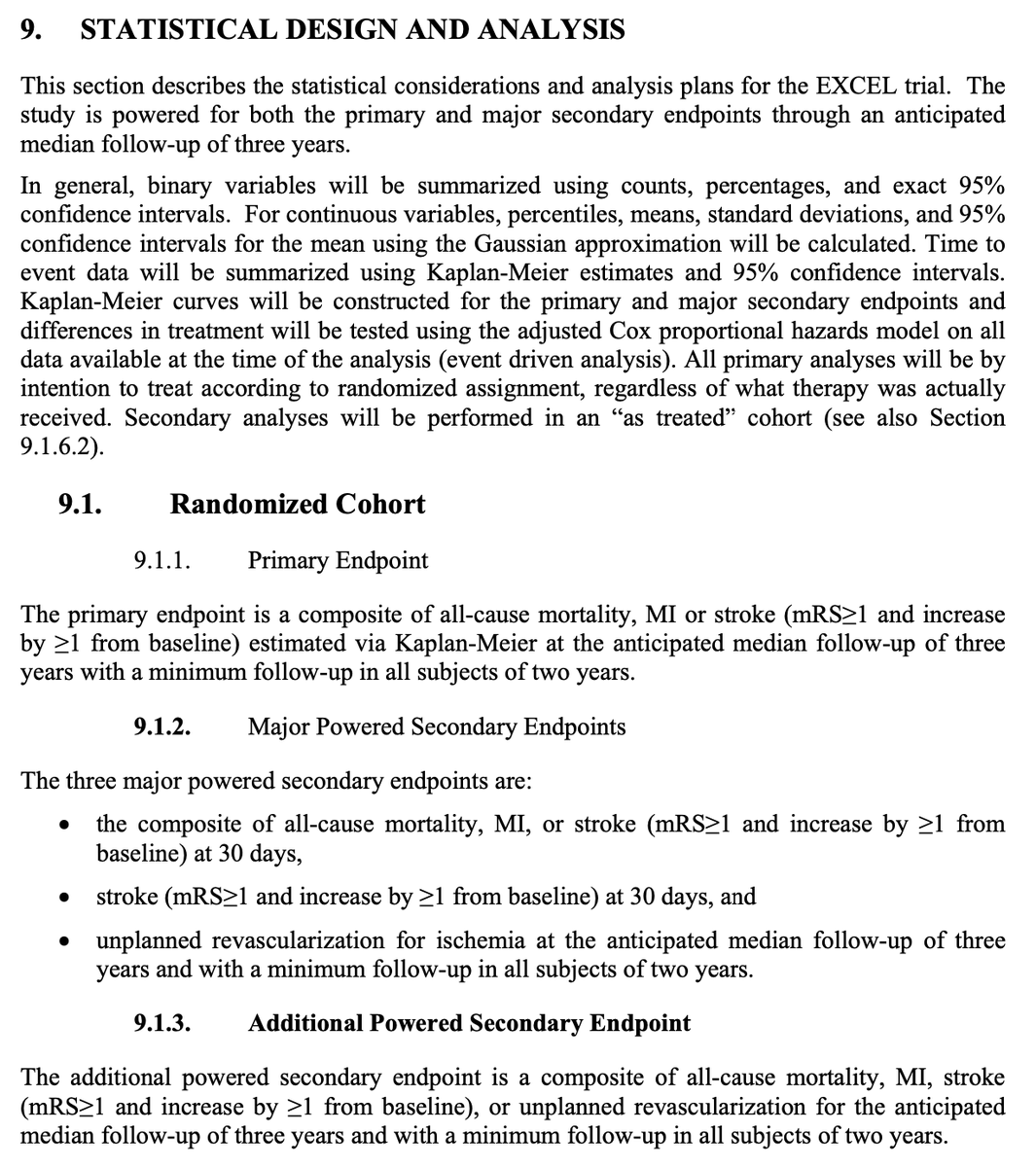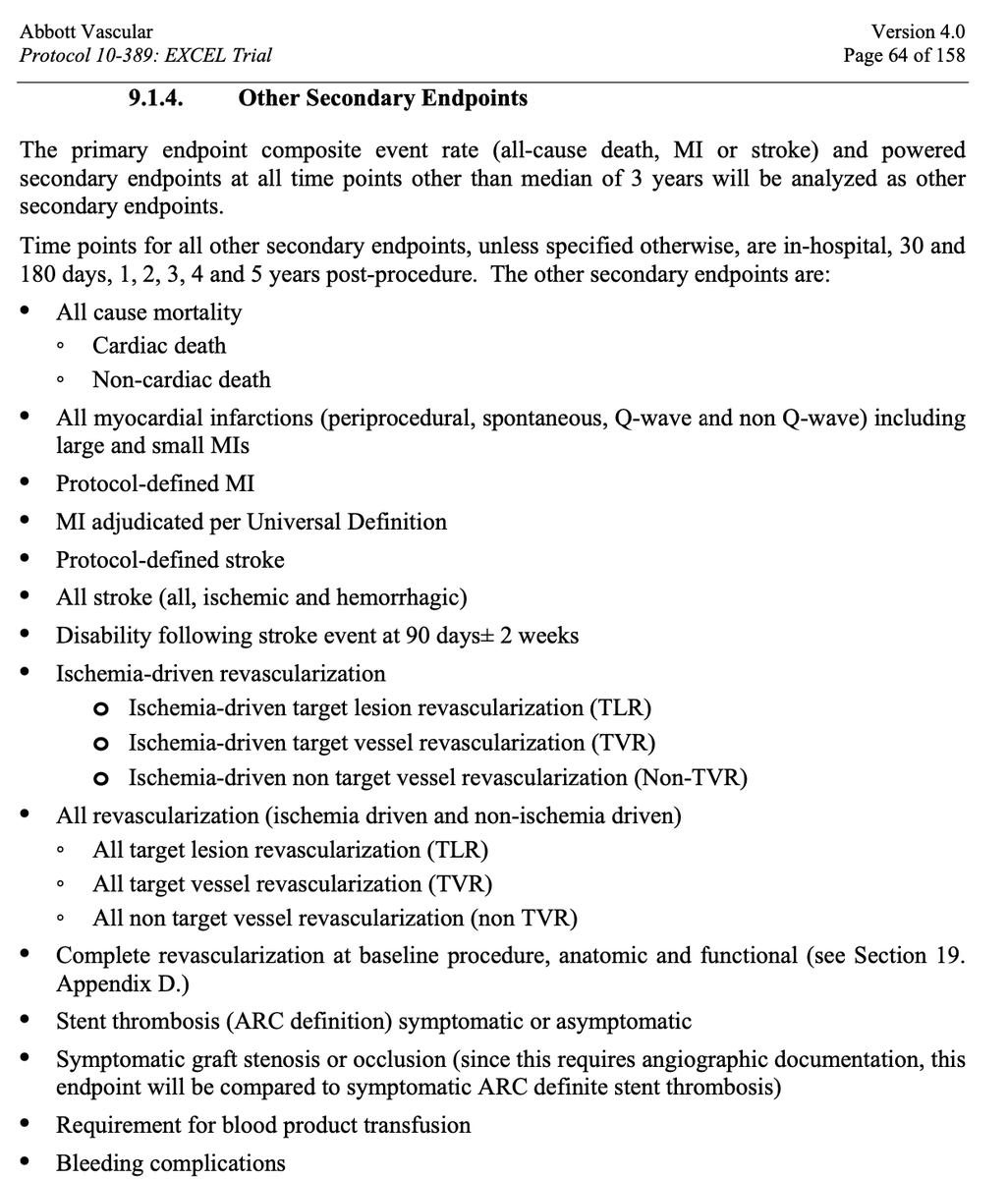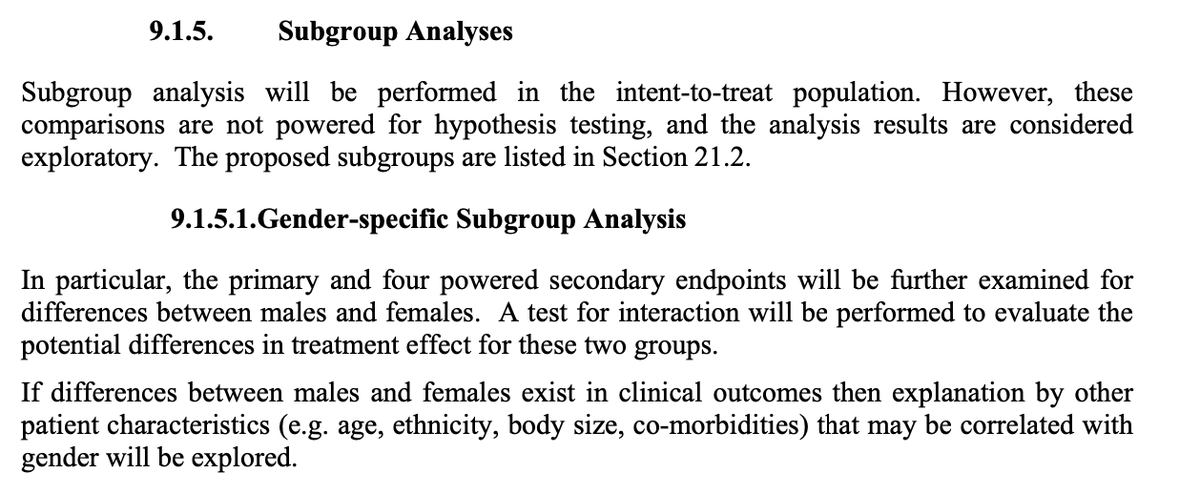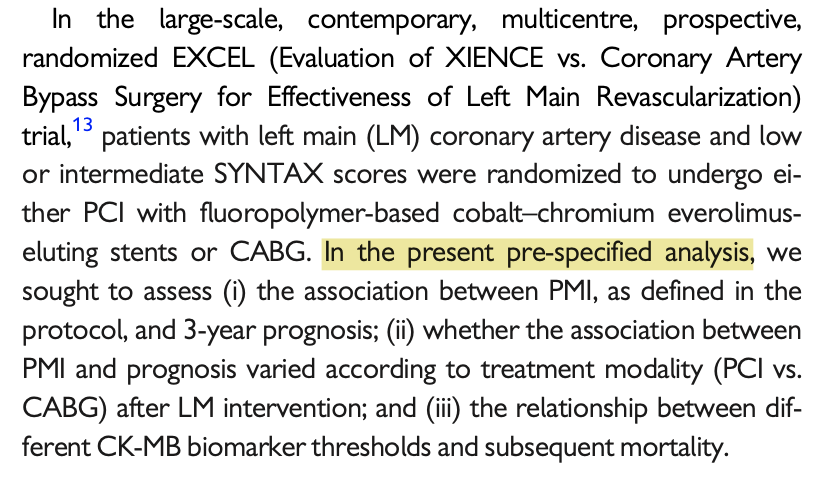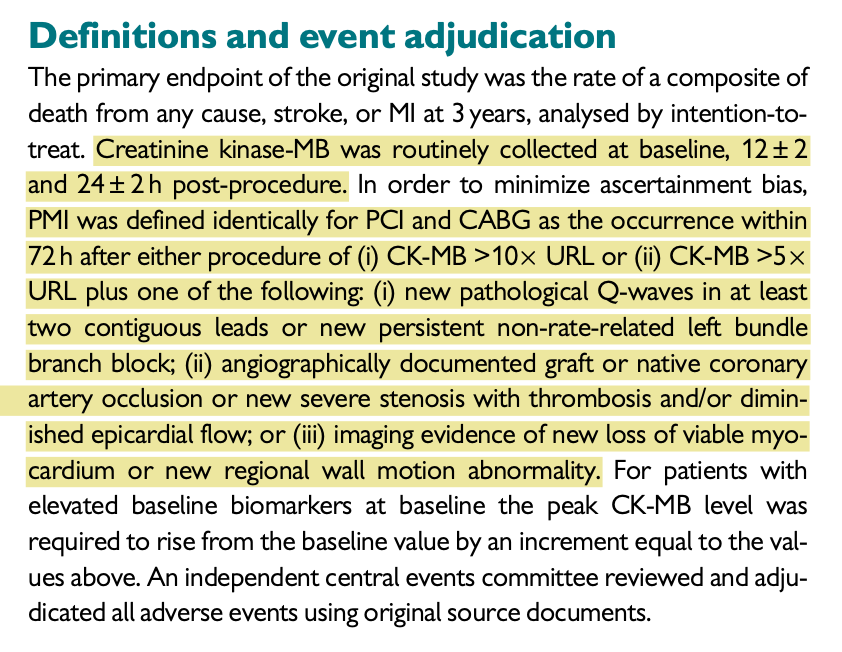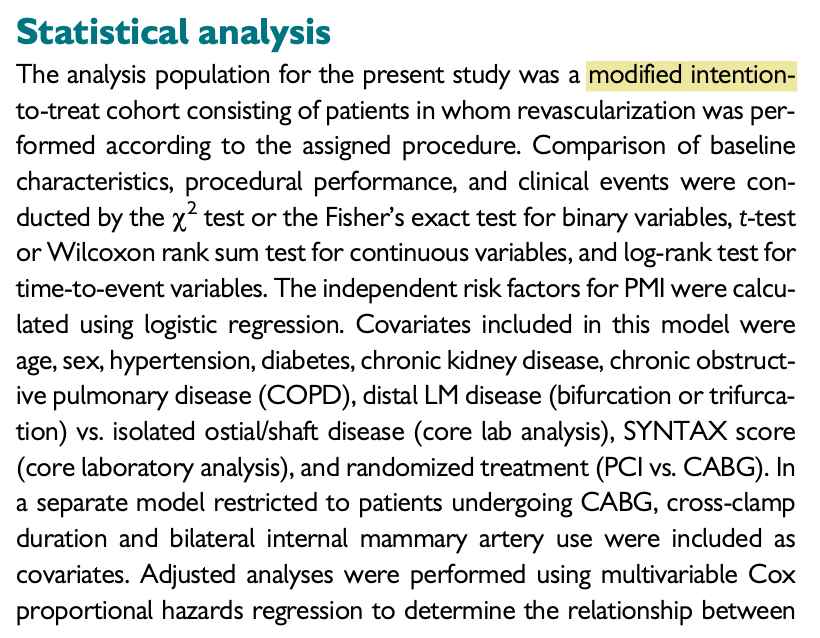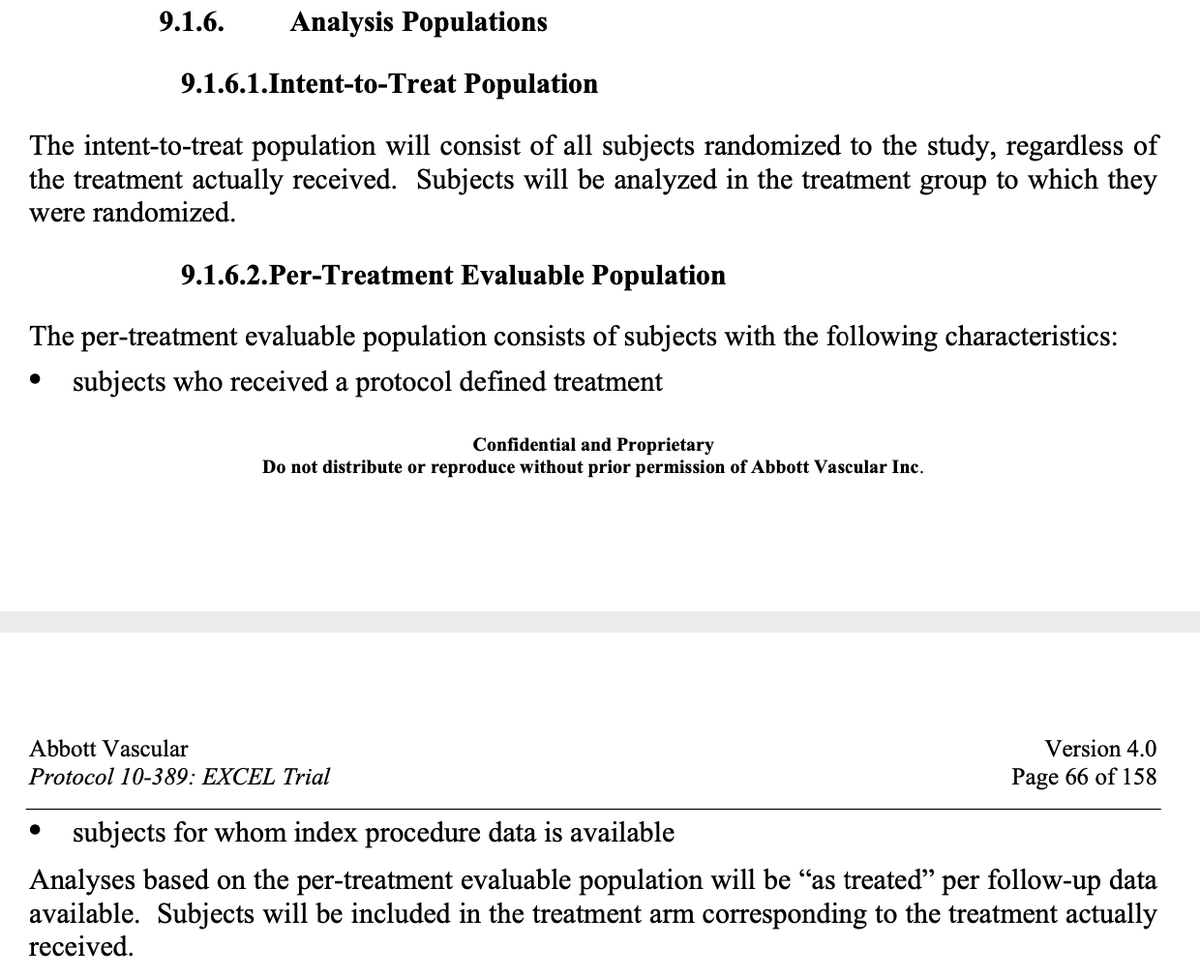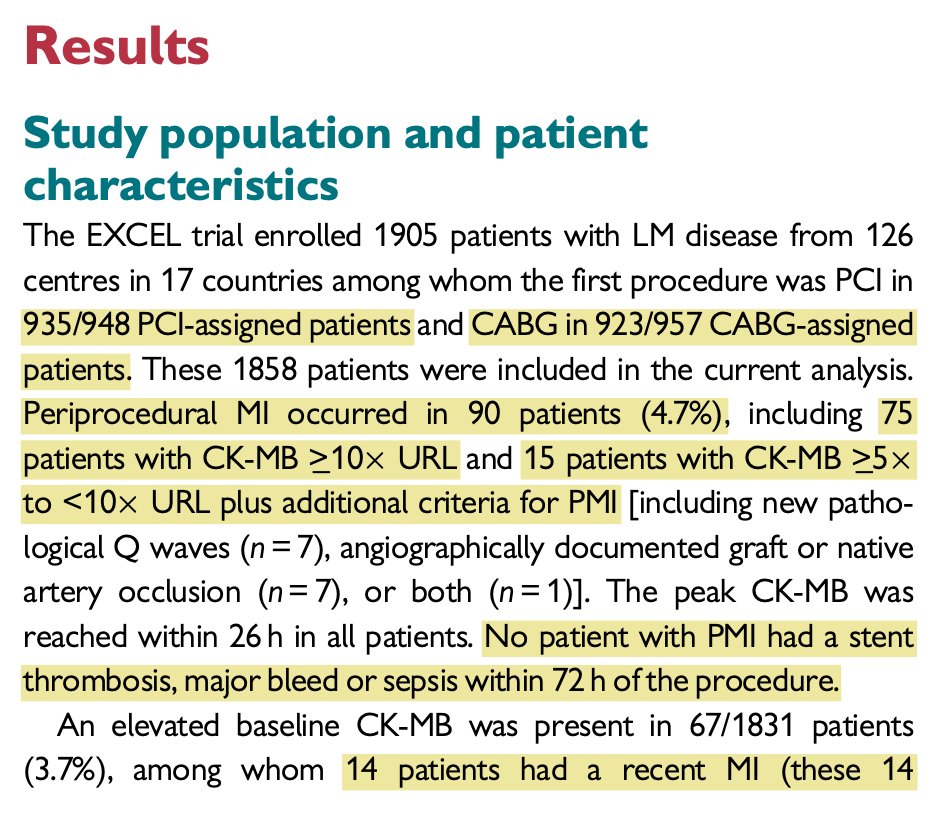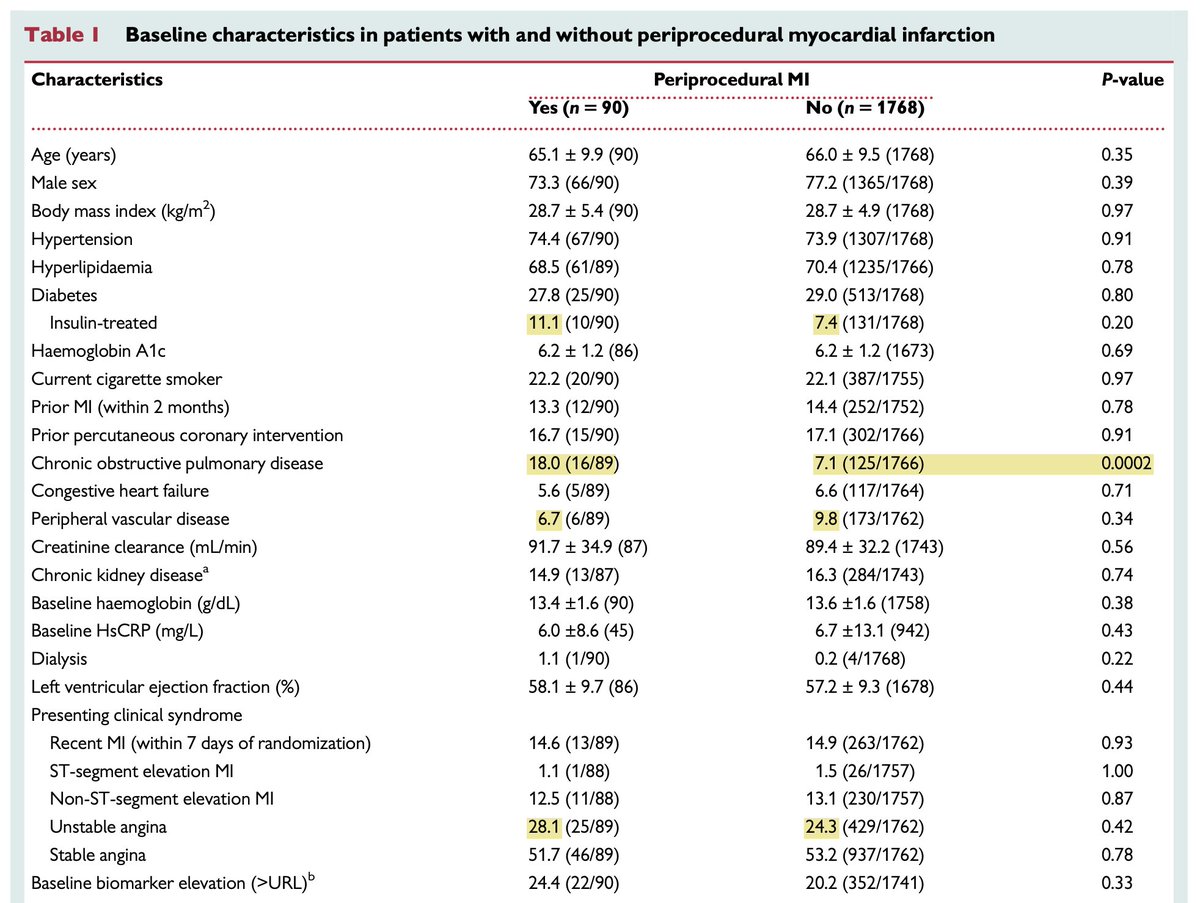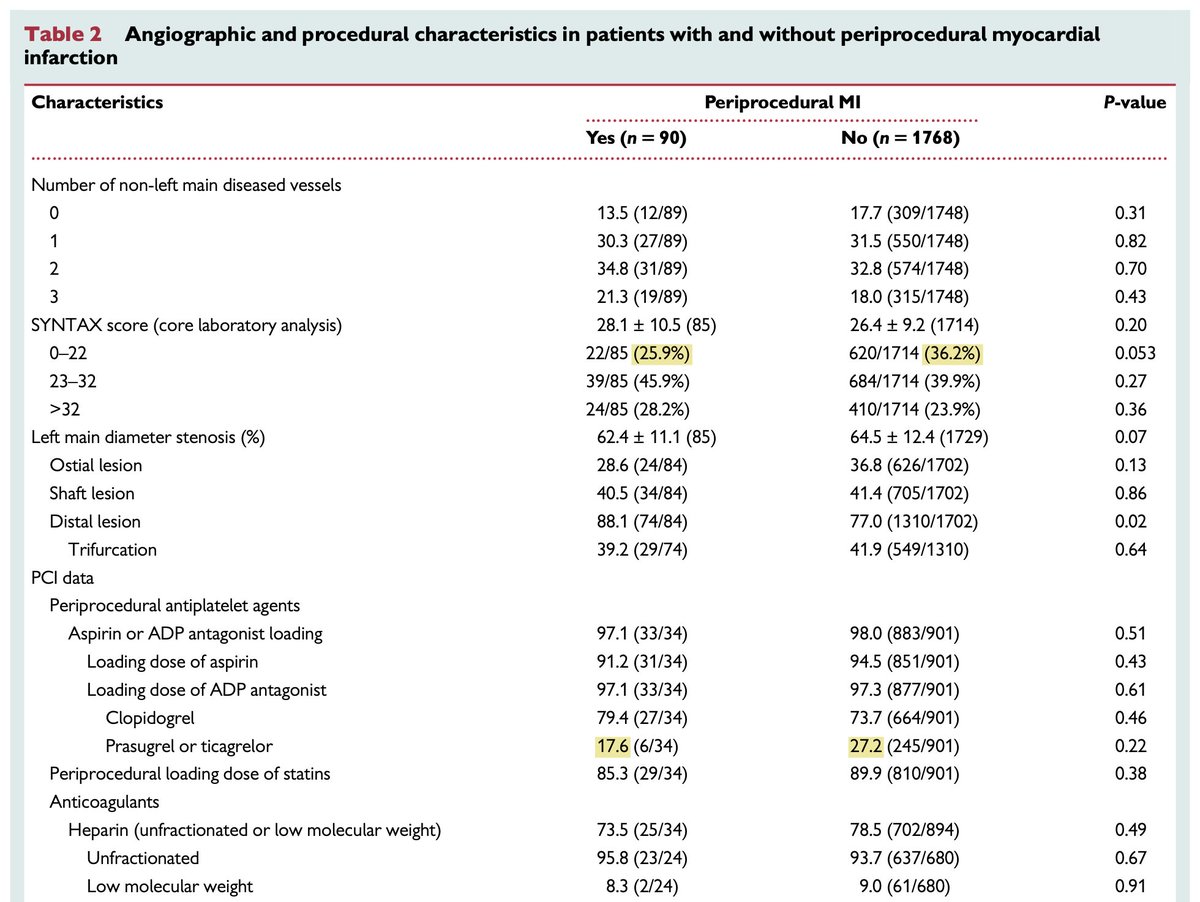1/ Oh no… another tweetorial on #EXCEL
Very interesting to see so many IC colleagues underscore the importance of periprocedure MI in #EXCEL (to the benefit of PCI) and reverse 180° after #ISCHEMIA (as it didn’t benefit PCI)
Very interesting to see so many IC colleagues underscore the importance of periprocedure MI in #EXCEL (to the benefit of PCI) and reverse 180° after #ISCHEMIA (as it didn’t benefit PCI)
2/ Let’s go back to the #EXCEL trial paper on PMI, and how the investigators chose a new definition of PMI
Interesting to see that the first 4 authors are all employed by the CRF clinical trials unit. Where does the funding for CRF come from?
Interesting to see that the first 4 authors are all employed by the CRF clinical trials unit. Where does the funding for CRF come from?
3/ Remember, this is the justification that #EXCEL investigators used for developing new definitions of PMI and including it in the primary outcome. So let’s take a deeper dive into this seminal paper
4/ Starting with the rationale and methods: 3rd UDMI require clinical correlates (new EKG changes, new RWMA, etc.) along with biomarker thresholds. Why forgo these clinical correlates in #EXCEL?
5/ Ok, seems reasonable: conflicting data on prognostic significance of PMI, so #EXCEL set out to test thresholds of biomarker values that have a prognostic significance
6/ Uh, wait just a second. The astute reader asks: does this argument justify forgoing clinical correlates and using entirely new PMI definitions?
7/ That’s right folks, the #EXCEL investigators don’t justify at all. They are saying “Let’s just do our thing, and see where that leads us”. Does that seem fair to you?
8/ Ok, back to the manuscript. #EXCEL set out to test biomarker thresholds of prognostic significance… Oh, @RichardWhitloc2 answers this one very astutely https://twitter.com/RichardWhitloc2/status/1178300694492778497?s=20">https://twitter.com/RichardWh...
9/ Ok, so let’s just work with what the manuscript is then: testing a single threshold. How did they do it?
Great, a prespecified analysis! Seems reasonable, right?
Great, a prespecified analysis! Seems reasonable, right?
14/ How about searching “pre-specified”, “pre-specified analysis” and any other combination… still not
15/ Ok, I give up. #cardiotwitter, to those who are much smarter than me, could you please show me where this analysis was pre-specified? Because I haven’t found a clue to show it. Which makes this statement interesting
16/ Now for methods. #EXCEL routinely collected baseline, 12 and 24h CK-MB. @Ajay had a great thread on how off this was (in ISCHEMIA) from real practice, and the risk of picking up a lot o noise for a small signal
https://twitter.com/ajaykirtane/status/1196795707174244353?s=20">https://twitter.com/ajaykirta...
https://twitter.com/ajaykirtane/status/1196795707174244353?s=20">https://twitter.com/ajaykirta...
17/ This also defines PMI in #EXCEL: CK-MB >10x URL without any clinical correlates. No justification for this
18/ Now for the statistical analysis: this was a “modified intention-to-treat cohort”. What does this mean? Patients were included only if their revascularization was performed according to the assigned procedure
20/ Maybe someone more intelligent can explain me this: isn’t this “modifed ITT” just an “as treated” analysis?
21/ So what’s the problem with using a modified ITT?
1. You lose the power of randomization.
2. You are using jedi mind tricks to make your readers think that your approach doesn’t suffer from 1
1. You lose the power of randomization.
2. You are using jedi mind tricks to make your readers think that your approach doesn’t suffer from 1
22/ Here are the results of this modified ITT: exclusion of 13 PCI and 34 CABG patients.
More importantly, only 90 PMI events for the entire study population
More importantly, only 90 PMI events for the entire study population
23/ Just 15 patients with CK-MB ≥5x URL + additional criteria (i.e. UDMI).
Hard to write a manuscript around 15 events, don’t you think? So let’s just lump in 75 more, with CK-MB ≥10 URL without clinical criteria, right?
Hard to write a manuscript around 15 events, don’t you think? So let’s just lump in 75 more, with CK-MB ≥10 URL without clinical criteria, right?
24/ So if this is an “as treated”, this means we loose the advantage of randomization. Table 1 (baseline characteristics) becomes important, no @ADAlthousePhD ?
25/ Well there was 2x as much COPD, but also more insulin-treated DM, less PVD (?!?) and more unstable angina in PMI pts
26/ PMI group had more complex lesions, and received less prasugrel or ticagrelor. Not signfiicant, but with n = 90 in one group, the threshold for a “significant” difference is greatly increased
27/ Anyway, this thread is already too long. Many more items to discuss, and would love to hear your thoughts
28/ Bottom line: I wonder if this manuscript is much better than the infamous ISIS-2 - astrological sign as predictor of survival https://www.thelancet.com/journals/lancet/article/PIIS0140-6736(15)61505-7/fulltext">https://www.thelancet.com/journals/...
29/ I& #39;m just trying to discuss a paper that has been heralded as the justification for using the SCAI def of MI in #EXCEL. My read is the evidence isn& #39;t that strong that SCAI-definition PMI in CABG has prognostic significance. Would love to hear and learn from #cardiotwitter

 Read on Twitter
Read on Twitter